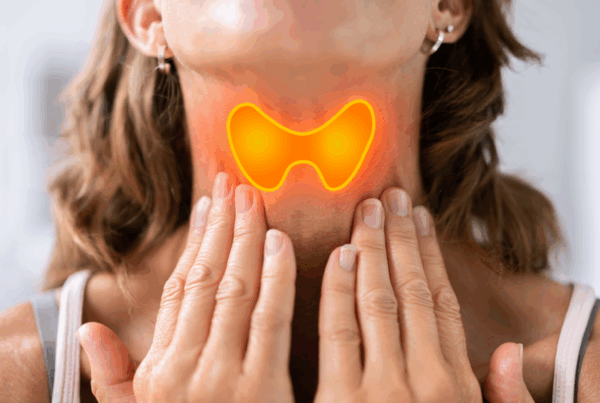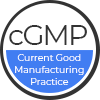
Male fertility is facing a global decline—and it’s not just about age or genetics. A growing body of evidence suggests that everyday environmental exposures are silently undermining sperm quality, hormone levels, and reproductive potential. From the plastics in our kitchens to the air we breathe, toxicants are infiltrating the systems that govern male reproductive health.
This article dives deep into the specific environmental toxins and lifestyle factors that research has shown to negatively impact male fertility. Drawing on recent scientific literature reviews and data, we’ll break down where these exposures are found and what you can do to reduce your risk.
Endocrine Disrupting Chemicals (EDCs)
Endocrine-disrupting chemicals (EDCs) interfere with hormonal systems by mimicking or blocking hormones like testosterone and estrogen, which are vital for male fertility and spermatogenesis.2,3 They disrupt the HPG axis, alter hormone levels, and can damage Leydig and Sertoli cells, impair the blood–testis barrier, and increase oxidative stress, DNA damage, and epigenetic changes.1 Even low-dose exposure, especially during development or puberty, can cause lasting or transgenerational reproductive harm.
Phthalates
- These chemicals reduce testosterone synthesis and impair Sertoli cell function, key for supporting developing sperm.1
- Commonly encountered in: soft plastics (e.g., PVC), vinyl shower curtains, children’s toys, medical tubing, and synthetic fragrances.
Bisphenols (BPA, BPS, BPF)
- Bisphenols disrupt estrogen and androgen receptor signaling, leading to epigenetic changes in sperm and reduced sperm quality.2
- Commonly encountered in: polycarbonate plastics, food can linings, thermal receipts, and some dental materials.
Parabens
- These compounds are known to reduce sperm count and motility. Parabens have also been implicated in mitochondrial dysfunction.3
- Commonly encountered in: preservatives in cosmetics and processed foods.
PFAS (“Forever Chemicals”)
- They accumulate in the body and are linked to reduced sperm concentration, increased DNA fragmentation, and altered hormone levels.3
- Commonly encountered in: in non-stick cookware, fast-food wrappers, firefighting foams, and contaminated water.
Perchlorates & Triclosan
- It has been reported that these chemicals may interfere with thyroid hormone regulation, which plays a role in testicular development and function.1
- Commonly encountered in: disinfectants, water, and hygiene products.
Synthetic Clothing
- These types of materials may leach chemical finishes and plasticizers—especially under heat or sweat—raising concerns about exposure to EDCs through the skin.1
- Commonly encountered in: clothing made with polyester, nylon, and spandex.
Heavy Metals
Even at low levels, heavy metal exposure can significantly disrupt male reproductive health by impairing sperm production and hormone regulation. Metals like lead, cadmium, mercury, and arsenic accumulate in the testes, where they damage Leydig and Sertoli cells, compromise the blood–testis barrier, and increase oxidative stress. This leads to reduced sperm count, motility, and testosterone levels, along with DNA damage and impaired fertility. Due to their persistence in both the environment and the human body, heavy metals pose a long-term risk, even with chronic low-dose exposure.1,2
Lead (Pb):
- Lead (Pb) exposure is linked to decreased semen volume, reduced sperm viability and motility, as well as increased oxidative stress and DNA damage in sperm cells, which collectively impair male fertility.1,2
- Commonly encountered in: old paint (pre-1978), plumbing, dust, certain traditional cosmetics/herbal remedies, occupational settings (e.g. construction/renovation).
Cadmium (Cd):
- Cadmium (Cd) damages the blood-testis barrier, impairing testicular function and reducing sperm count, motility, and morphology, while also causing oxidative stress and hormonal disruption important for spermatogenesis.1,2
- Commonly encountered in: cigarette smoke, industrial emissions (mining, smelting, battery production), and some contaminated foods (grains, leafy vegetables, shellfish, organ meats from polluted areas)
Mercury (Hg):
- Mercury (Hg) exposure has been linked to mitochondrial damage in spermatozoa, impairing energy production and increasing oxidative stress, which ultimately compromises sperm motility and viability.2,3
- Commonly encountered in: large fish (shark, swordfish, king mackerel, tilefish), industrial emissions (coal combustion, mining) and amalgam dental fillings (older “silver” fillings)
Arsenic (As):
- Arsenic (As) exposure disrupts sperm DNA integrity by causing oxidative damage and interferes with testicular steroidogenesis, particularly reducing testosterone production, which impairs spermatogenesis and overall male fertility.1,2
- Commonly encountered in: contaminated drinking water (natural geological deposits), certain foods (rice and rice products, some seafood, apple juice), and historical pesticides.
Agricultural & Pest Control Chemicals
Many pesticides impair male fertility by disrupting the hormonal balance essential for spermatogenesis, particularly through interference with the HPG axis and androgen-estrogen signaling. This leads to reduced testosterone, altered LH and FSH levels, and declines in sperm count, motility, and morphology. Some also cause oxidative stress and direct testicular damage, making pesticide exposure a persistent and widespread risk factor for male infertility.1,2
Organophosphates (e.g., Malathion)
- Organophosphate pesticides disrupt the HPG axis, lowering testosterone and impairing spermatogenesis by causing endocrine disruption and oxidative stress, which reduces sperm count and motility.1,2
- Commonly encountered in: agricultural spraying (especially on non-organic fruits, vegetables, and grains), residential pest control, and contaminated water and soil.
Organochlorines (e.g., DDT, Dieldrin, Chlordane)
- Organochlorines are persistent pollutants that accumulate in human tissue and impair sperm quality by reducing count, motility, and damaging DNA. They disrupt hormone regulation with estrogenic or anti-androgenic effects, lasting decades after peak use.1,3
- Commonly encountered in: fatty foods (meat, fish, dairy) due to bioaccumulation, contaminated soil and water, and older pesticide residues still present in some environments.
Herbicides (e.g., Glyphosate & Atrazine)
- Widely used herbicides like glyphosate and atrazine are linked to testicular toxicity, with glyphosate reducing testosterone synthesis and atrazine disrupting LH and FSH levels, harming Leydig cell function.1,2
- Commonly encountered in: conventional agriculture (especially on corn, soy, sugarcane), lawn care products, and contaminated drinking water due to agricultural runoff.
Fungicides (e.g., Vinclozolin)
- Vinclozolin, a commonly used fungicide with anti-androgenic properties, causes reproductive toxicity by disrupting hormone signaling and inducing transgenerational epigenetic changes in germline cells, which impair sperm quality and increase infertility risk in male offspring.2
- Commonly encountered in: sprayed on fruits and vegetables, used in vineyards, ornamental plants, and turf management; also present in some building materials and treated wood.
Industrial & Airborne Pollutants
Industrial and airborne pollutants, though often unseen, significantly harm male reproductive health by inducing oxidative stress and epigenetic changes. Persistent compounds like PCBs, dioxins, and furans disrupt testosterone production, while PAHs from emissions and charred foods damage sperm DNA and morphology. Solvents such as toluene and glycol ethers reduce sperm quality, and common air pollutants like PM2.5, NO₂, and VOCs have been linked to lower motility, DNA fragmentation, and impaired spermatogenesis.1-3
PCBs (Polychlorinated Biphenyls), Dioxins, and Furans
- PCBs, dioxins, and furans accumulate in fat and disrupt testosterone production by interfering with steroidogenesis and inducing oxidative stress, leading to reduced sperm quality and testicular damage.2,3
- Commonly encountered in: old electronics and incineration byproducts.
PAHs (Polycyclic Aromatic Hydrocarbons)
- PAHs (Polycyclic Aromatic Hydrocarbons) cause oxidative stress that damages sperm DNA and disrupts sperm morphology, leading to decreased fertility and increased risk of reproductive abnormalities.1,3
- Commonly encountered in: Vehicle emissions, wildfires, and charred foods.
Solvents (e.g., Toluene, Glycol Ethers)
- Occupational exposure to solvents like toluene and glycol ethers is linked to reduced semen quality by causing oxidative stress and hormonal imbalances that impair sperm production and function.2,3
- Commonly encountered in: paints and cleaners
Air Pollutants (PM2.5, NO2, VOCs)
- Chronic exposure to air pollutants such as PM2.5, NO2, and VOCs increases oxidative stress and inflammation, which lowers sperm motility and elevates DNA fragmentation, ultimately impairing male fertility.1,3
- Commonly encountered in: Highly populated areas
Lifestyle & Recreational Risks
Everyday lifestyle choices can either mitigate or worsen the effects of environmental toxins on male reproductive health. Factors like smoking, alcohol use, heat exposure, stress, and poor sleep can increase vulnerability to these toxins by disrupting hormonal balance and increasing oxidative stress, ultimately impacting fertility.1-3
Smoking/Vaping
- Smoking and vaping introduce reproductive toxins like cadmium and PAHs into the body, which elevate oxidative stress in the testes, impair sperm function, and contribute to DNA damage and reduced fertility.1,2
Alcohol & Drug Use
- Alcohol and drug use are associated with hormonal imbalances, including reduced testosterone levels, and contribute to increased sperm abnormalities and impaired spermatogenesis.1,2
Heat Exposure
- Heat exposure from sources like hot tubs, laptops, or tight clothing raises scrotal temperature, which can impair spermatogenesis by disrupting testicular function and reducing sperm quality.1
Radiation
- Radiation from electromagnetic field (EMF)-emitting devices like cell phones and Wi-Fi may disrupt testicular thermoregulation and increase reactive oxygen species (ROS), contributing to oxidative stress and potential sperm damage.1,3
Caffeine, Sleep Deprivation, Stress
- Caffeine consumption, sleep deprivation, and chronic stress have been shown to disrupt hormonal rhythms and elevate oxidative stress, which can impair spermatogenesis and reduce overall sperm quality.1
Internal & Medical Exposures
Not all harmful exposures come from the outside—internal biological imbalances and medically related sources can significantly impact male reproductive health. These include chronic inflammation, oxidative stress, ionizing radiation, and exposure to pharmaceutical residues through water and food systems.
Chronic Inflammation & Oxidative Stress
- Oxidative stress driven by poor diet, obesity, chronic inflammation, and gut dysbiosis can damage sperm DNA, disrupt testosterone production, and impair mitochondrial function—undermining natural and assisted fertility by lowering fertilization potential and embryo viability.2,3
Ionizing Radiation
- Ionizing radiation from medical imaging, cancer therapy, or environmental and occupational exposure can impair fertility by damaging germ cells through DNA breaks and mitochondrial dysfunction, even at low doses, underscoring the need for shielding and minimized exposure in reproductive areas.1
Pharmaceutical Residues
- Trace pharmaceutical residues—such as hormones, antidepressants, and antibiotics—can enter drinking water and food through wastewater and animal feed, potentially disrupting the HPG axis and male reproductive health even at low, chronic exposure levels.2
Next Steps: Comprehensive Detoxification
Many individuals suffer from toxin buildup due to overburdened liver, lymphatic, and cellular detox systems, which can lead to chronic fatigue, inflammation, poor immunity, and digestive problems. Our clinically designed Deep Detox Protocol offers a comprehensive biological reset by targeting the full detox triad, liver, lymphatic, and cellular pathways, through cutting-edge microbiome and nutrigenomic technologies.
Hormone µBiomic & Hormone Superfood
- These next-generation pre- and probiotics feature exclusive keystone microbial species that recalibrate the gut-liver-hormone axis, restore microbial balance, and boost the production of detox-supporting metabolites to reduce systemic toxic load.
DetoxiGenic
- A nutrigenomic formula that activates Phase I and II liver detox enzymes by upregulating gene expression tied to toxin metabolism, biotransformation, and antioxidant defense, enhancing cellular detox capacity.
LymphGenic
- Designed with detoxification gene pathways in mind, this formula promotes lymphatic flow and drainage, efficiently moving toxins out of tissues, reducing stagnation, and easing inflammation for deeper detoxification.
BindGenic
- An intelligent binder that captures and eliminates mobilized toxins without depleting beneficial minerals or microbes, preventing reabsorption and completing the detoxification process with precision.
Together, these formulas work synergistically to reduce toxic load, restore mitochondrial balance, and support reproductive resilience. We also recommend genetic testing with the MY DNA Test to assess your unique detoxification capacity and guide a personalized health approach.
For truly comprehensive, long-term support, we strongly encourage every patient to begin with the Holobiome Roadmap—our foundational reset protocol. This system is designed to optimize core bodily functions before advanced detox, ensuring all subsequent protocols are more effective and better tolerated. By restoring baseline resilience through gut, immune, and cellular recalibration, the Holobiome Roadmap lays the essential groundwork for detoxification and fertility recovery to take full effect.
To Sum It All Up
Our modern environment is filled with hidden fertility disruptors—many of which we encounter daily. From hormone-mimicking plastics to air pollution and heavy metals, the cumulative burden of environmental toxicants is significant. The good news? Awareness is the first step toward action.
To support male reproductive health:
- Reduce exposure where possible (clean personal care products, avoid non-stick cookware, choose organic).
- Support detoxification through diet, supplementation, and lifestyle.
- Prioritize antioxidant intake to counteract ROS damage.
A proactive approach to environmental health could be the missing link for many men struggling with fertility. As research continues to evolve, our choices today can safeguard reproductive health for tomorrow.
References:
- Krzastek, S. C., et al. (2020). Impact of environmental toxin exposure on male fertility potential. Translational Andrology and Urology, 9(6), 2797–2813. https://doi.org/10.21037/tau-20-685
- Lahimer, M., et al. (2023). Endocrine disrupting chemicals and male fertility: from physiological to molecular effects. Frontiers in Public Health, 11, 1232646. https://doi.org/10.3389/fpubh.2023.1232646
- Sciorio, R., et al. (2025). Potential effects of environmental toxicants on sperm quality and potential risk for fertility in humans. Frontiers in Endocrinology, 16, 1545593. https://doi.org/10.3389/fendo.2025.1545593






